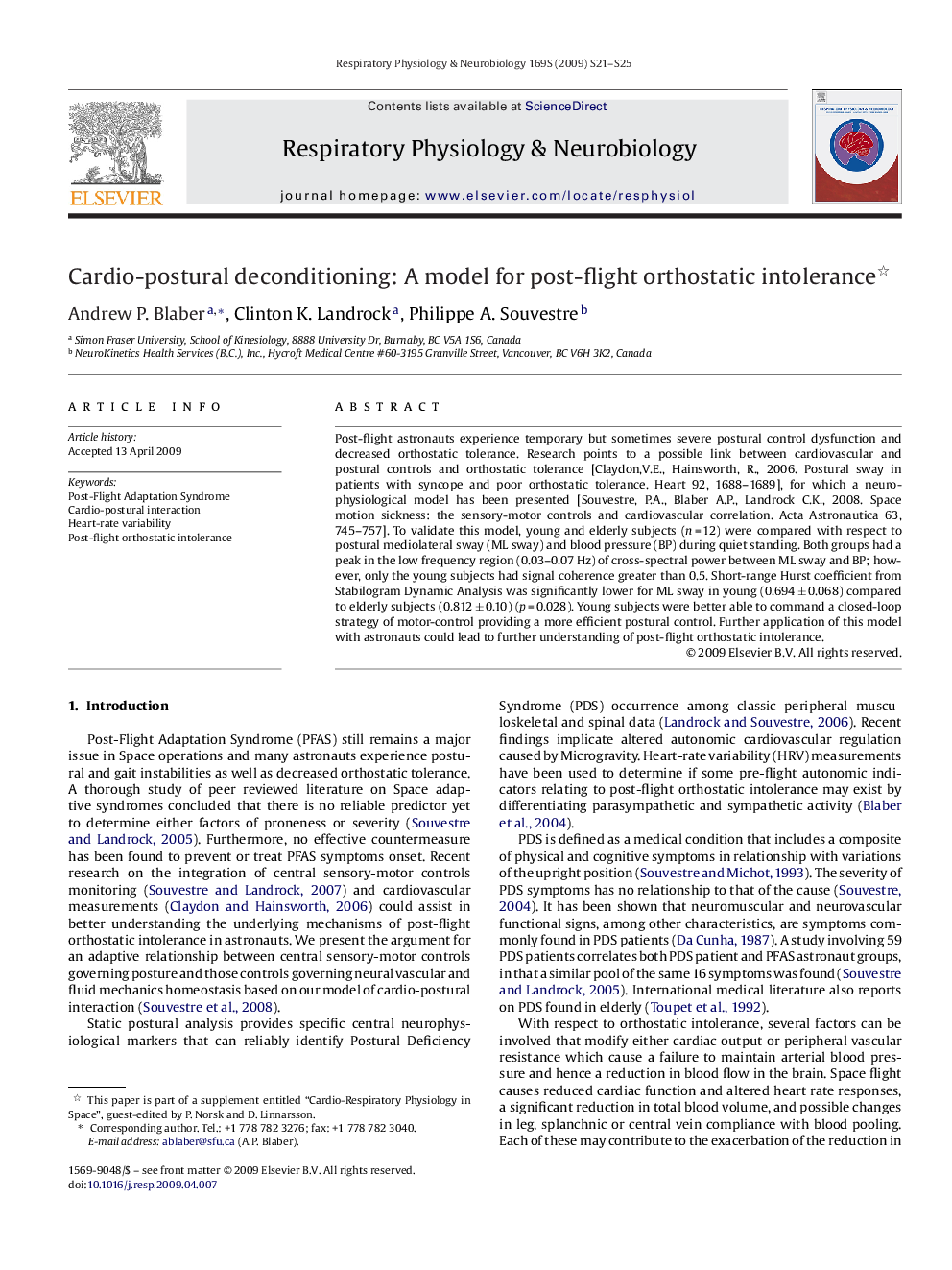| کد مقاله | کد نشریه | سال انتشار | مقاله انگلیسی | نسخه تمام متن |
|---|---|---|---|---|
| 2847820 | 1167391 | 2009 | 5 صفحه PDF | دانلود رایگان |

Post-flight astronauts experience temporary but sometimes severe postural control dysfunction and decreased orthostatic tolerance. Research points to a possible link between cardiovascular and postural controls and orthostatic tolerance [Claydon,V.E., Hainsworth, R., 2006. Postural sway in patients with syncope and poor orthostatic tolerance. Heart 92, 1688–1689], for which a neurophysiological model has been presented [Souvestre, P.A., Blaber A.P., Landrock C.K., 2008. Space motion sickness: the sensory-motor controls and cardiovascular correlation. Acta Astronautica 63, 745–757]. To validate this model, young and elderly subjects (n = 12) were compared with respect to postural mediolateral sway (ML sway) and blood pressure (BP) during quiet standing. Both groups had a peak in the low frequency region (0.03–0.07 Hz) of cross-spectral power between ML sway and BP; however, only the young subjects had signal coherence greater than 0.5. Short-range Hurst coefficient from Stabilogram Dynamic Analysis was significantly lower for ML sway in young (0.694 ± 0.068) compared to elderly subjects (0.812 ± 0.10) (p = 0.028). Young subjects were better able to command a closed-loop strategy of motor-control providing a more efficient postural control. Further application of this model with astronauts could lead to further understanding of post-flight orthostatic intolerance.
Journal: Respiratory Physiology & Neurobiology - Volume 169, Supplement, October 2009, Pages S21–S25